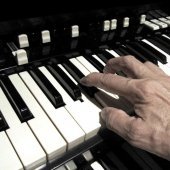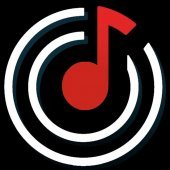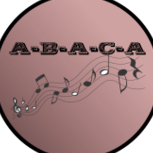Leaderboard
Popular Content
Showing content with the highest reputation on 07/02/2021 in all areas
-
We've reached the highest discount tier of 60% OFF and unlocked the freebie! The link to download the freebie is on the group buy page in your account (next to the discount tier). It was a lot of fun to put together, and I hope you enjoy it! If you have any questions about how to use it, let me know--I just realized there isn't any documentation included, but hopefully everything is self-explanatory...9 points
-
https://cinematique-instruments.com/pages_instr/page_klang.php New Klang is up - Mutant Piano4 points
-
4 points
-
FWIW, I've noticed that Cubase 11's ultra-low latency performance is a significant improvement vs. version 10. ie: With version 11, I can run Helix Native at 96k using a 32-sample ASIO buffer size (1ms total round-trip latency)... with zero glitches. Version 10 was more prone to ASIO buffer peak overloads (glitches).4 points
-
Hi, I'm reading this with interest ... I'm using SSL hardware with RME cards which give me (max.) 192 channels. I have not yet updated to this latest version, but will make sure to take screen shots of before and after. I spent quite a bit of time making "friendly names" easy to read in the dropdowns, so I'm interested to see if this new "feature" will be just as easy to understand after the update. I'll comment more later.3 points
-
It can never really be precisely defined for this kind of thing, I think. I mean, I think Reaper is really impressive, but I rarely use it unless forced to by work requirements. And that's exactly because every long menu and huge, 20-button pop up box in Reaper makes my eyes glaze over. At the same time, I know there are people who love that degree of reconfigurability. So there's the question-of-taste aspect. On top of that, there's the more objective fact that it is easier to find your feet in an application that demands you make technical decisions you might not have a view on less often, or perhaps never. Garage Band is at the far extreme of this, happily sacrificing flexibility in favour of ease of use. For what it's worth, I think Cakewalk is more and more successful all the time at presenting a friendly default top layer, but having lots of underlying flexibility for advanced users. So I think "staying away from excessive options" is a good aspiration, and one that's been yielding good results. I don't think it should be a dogma, though. But I think they get the balance right most of the time.3 points
-
Downloads are now available for the KVR Developer Challenge 2021 ! Lots to explore. https://www.kvraudio.com/kvr-developer-challenge/2021/2 points
-
https://www.kvraudio.com/news/kuassa-summer-sale-all-plugins-50-off-52196 Should be available at JRR and PluginBoutique soon too!2 points
-
It's been a bit of a dirty secret that some editing techniques that are standard practice with pop music are also used with "pure" genres such as classical, jazz and folk. Sure, engineers working in those genres will usually strive for transparency, but then pitch correction in pop music was once meant to be unnoticeable too. They got over that self-imposed restriction pretty fast. At present, classical music production sticks to a light touch and subtle digital manipulation, but they've only recently become comfortable with admitting they do it at all. It makes sense to apply some amount of dynamic range reduction, given that people are far more likely to listen in the car while sitting in traffic, or on ear buds on a plane or train. Noise reduction seems reasonable, too. But I have to wonder if there hasn't also been some discrete enhancements using EQ and reverb. This video mostly addresses editing, as opposed to processing (we can still draw a distinction between those things, for now). Mostly they talk about comping, but also mention the ability to do polyphonic pitch and timing corrections using Melodyne. There is a segment in the middle that CW users might find interesting, where the hosts attempt to discern between real instruments and virtual instruments. Spoiler: the drummer guessed wrong on the drums and the pianist guessed wrong on the piano.2 points
-
I pulled off Bass Pear for $23 and change and SLIDE Acoustic for $25 and smaller change. That's my first stuff ever from OTS. Thanks Greg.2 points
-
DOR indeed However keep in mind not all audio drivers are nice enough to have names that properly show their channels and this also varies drastically by driver mode. For example a device with a single stereo input may just call it "Input". Now if we didn't have the numbers in the menu you would get something like: Input Input Input Instead of what it shows now. 1: Input 2: Input 1+2: Input Just to illustrate that there are cases where numbering is not redundant... This stuff is a complete maze with the differences between devices, driver modes, and virtual instruments. I can barely get my head around all the permutations of things. Hence we decided to simplify and use a uniform numbering method. Anyway we'll collect more feedback and if there is a way to solve it without breaking some other case we'll improve it for next release. So far its looking like the safest approach is to disable it only for hardware ports when friendly names are used, since the user has control over the naming there. i.e even if it led to the bad case listed above you could go in and rename the ports to resolve it.2 points
-
2 points
-
Closest I ever came to anyone in Pink Floyd was meeting Bob Geldof before sun up at an empty cafe, trackside at Paddington Station. He invited my colleague and I over, saying "I don't want to read this bloody paper all by myself!" It might not have been Waters, but it was Geldof.2 points
-
Cool. If you like texture, you gotta love a bit of Klang. Freebies that I actually use.2 points
-
@Noel Borthwick please PM me when something is materialized.2 points
-
I have 9 orange slices left. So far, I'm the title holder. Bring it on boys and girls.2 points
-
2 points
-
2 points
-
Hi Zo, Yes, With version 11... I'm finding performance at ultra low latency is less prone to ASIO peak buffer overloads.2 points
-
Electro Stampede by W.A. Production is a massive array of the finest Electro sounds, now $0.00 for a Limited Time! These samples are guaranteed to sound amazing whether you are at home, in the car, at the club, or any live situation. Included in the pack are 5 Construction Kits. Construction Kits are perfect for expanding creativity, for those who need to create a mix, like yesterday, and those who need to know how to make EDM.. The content in this pack will drive your creativity through the roof, and bring your next projects to a whole new level. Get Electro Stampede now for FREE for a limited time only! More info: https://audioplugin.deals/electro-stampede-by-wa-production/ Offer expires on July 15th, 2021 KEY FEATURES 5 Construction Kits (+ MIDI & Presets) 25 Presets for Serum 25 Presets for Sylenth1 45 Melody Loops (+ MIDI) 50 Synth Shots 30 Percussion Loops 15 Kicks 10 Claps 9 Percussion 15 Cymbals 23 FX 100% Royalty-Free2 points
-
Don't forget the orange slices you got from that so you can come back and get yourself something else from the deal real quick, maybe take a survey first then get something else2 points
-
2 points
-
I opened a case politely asking to please fix not being able to see previous purchases or to gently fire their IT guy and then fix the problem. Will let you know what they respond.2 points
-
Despite my land down under-ness, Vegemite (note correct spelling) is not a favourite, though I will eat it medicinally eg. for upset tummy. Hey! Does GAS count as an upset tummy? You may be onto something. Hmm!2 points
-
I am looking forward to sharing some of my latest adventures with @gregjazz Orange Tree Samples, along with @AudioBrewers latest library Tangent Drum. I will also catch up on the latest update to Pianoteq 7. 4:00 PM EST2 points
-
2 points
-
2 points
-
@Simeon Amburgey covered some Orange Tree guitars in his latest livestream today... ?2 points
-
Get T-RackS 5 Deluxe or MAX free with select iLoud monitors and ARC 3 Through July 31, IK is offering T-RackS 5 free with the purchase of select iLoud monitors and ARC System 3. That's a savings of up to $499.99! With proper gear and preparation, you can mix and produce broadcast-ready audio anywhere, even on the move. This means being able to make the most of your listening environment and having the right monitors and production tools. IK has you covered for all three of these. Choose any of the products below and (for all your processing needs) we'll give you either T-RackS 5 Deluxe (a $299.99 value) or T-RackS 5 MAX (a $499.99 value). ARC System 3 combines an ultra-accurate measurement microphone, analysis software and correction plug-in to improve the accuracy of your monitoring in any room. Work faster and more freely, confident you're hearing your music itself and that your music will sound great everywhere. Get ARC 3 iLoud Micro Monitors help you hear the truth in your music anytime and everywhere. The smallest active studio reference monitoring system in the world, iLoud Micro Monitor provides you with ultra-accurate true linear frequency response with no coloration, and does so in every listening environment. Get iLoud MICRO iLoud MTM studio monitors extend the low end to rival that of 5", 6" and even 8" monitors with built-in acoustic self-calibration to dramatically improve your mixing decisions. Using the most advanced DSP techniques to provide total control over the speakers' performance, MTMs offer results simply not obtainable with traditional analog designs. Includes an ARC reference mic. Get iLoud MTM Make your move on a great deal. Visit IK's online store* or your favorite IK dealer today for our Mix on the Move specials. Promo ends July 31. Discounted IK Music Software: ARC System 3 - $/€249.99 - Free T-RackS 5 Deluxe ARC System 3 crossgrade - $/€149.99 - Free T-RackS 5 Deluxe iLoud Micro Monitor (black) - $/€299.99 - Free T-RackS 5 Deluxe iLoud Micro Monitor (white) - $/€299.99 - Free T-RackS 5 Deluxe iLoud MTM (single, black) - $/€349.99 - Free T-RackS 5 MAX with pair iLoud MTM (single, white) - $/€349.99 - Free T-RackS 5 MAX with pair *JamPoints accepted at the IK online store Although IK strives to provide accurate product and pricing information, unintentional pricing or typographical errors may occur. Prices do not include taxes/VAT. IK reserves the right to correct, change or update information such as pricing, availability and product descriptions, at any time without notice. Promotion valid through July 31, 2021.2 points
-
2 points
-
2 points
-
$5k for a new computer is a small price to pay for a center-justified taskbar. Ever notice Microsoft's surprisingly consistent pattern of alternating good and bad versions? Windows 2 was useless, Windows 3 changed the world. Win 95 made half your applications stop working, Win 98 addressed those problems. Windows ME, 'nuff said. XP was great, Vista sucked. Win 7 was troublesome but ultimately recognized as forward progress, but Win 8 was widely ridiculed for trying to make desktop displays look and act like tablets. Then Win 10 redeemed the brand again. Let's hope Win 12 swoops in to save the day.2 points
-
Still one of the best. Waiting for that big 3.2 points
-
Hello again, fellow KWalkers ?. Quick question first. Does posting songs on Bandlab preserve their fidelity? I find that files lose quality in SoundCloud. It doesn't allow me to switch streaming from standard to high quality audio. Hoping to hear what your experience is with that. ? So...about this song: This was the song I moved onto after I learned enough about programming guitars with MusicLab's RealGuitar and RealStrat on "For All We Know", as I mentioned in my last post, so all instruments here are also VST. The song is an original in Spanish that talks about missing someone and if Spanish is not one of your languages I would love it if you could show it to a friend. Yes, it's mine BTW and it's definitely not mastered either but I hope they get the idea. I didn't wanna bore you all with the translation here but I can add it later if anyone cares. ? Meanwhile I hope you can listen to it and treat my voice in your minds just like another instrument. (I'd prefer to be a guitar in your minds if it's all the same to you LOL) At the time I wrote it I envisioned making it in the style of "Jesus To A Child" by George Michael, but that changed with the passage of time and under other influences. When I finally recorded the track as posted here, I had been listening a lot to John Mayer, so I ended up experimenting with some of his approaches to dynamics and arrangements. He doesn't have a powerful voice so they use a close mic-ing technique and they put kind of a flat EQ on his lead vocals (I hand held a Shure Beta 58 for this one) . They also put the lead vocals up front so the diction cuts through, and then they surround it with alternate vocal and instrumental melodies that become part of the chords in the arrangement. Maybe because of that they also don't mix the bass and drums as a typical rock mix. This is most often how they mix pop in other languages too, so to Spanish language listeners (me included) this approach feels natural. Though I can reach the higher notes in the backing vocals here, I used the available Melodyne and lowered the entire bounced track as needed to punch in some of the phrases and then moved those punches to the original song's key for mixing. The advantage I found to doing it this way is that the slight difference in texture (format) makes the harmonies more interesting. (Not feeling like the Castrati was another welcome benefit LOL) I hope you guys enjoy or at the very least can relate. Be well, KWalkers1 point
-
1 point
-
Tracktion - Independence Day 40% SALE https://www.tracktion.com/ Celebrate the 4th of July with our sitewide 40% savings on all software. Now is the time to grab some new software at unbelievable prices. Automatic discount applied at checkout. Sale ends Tuesday 7/6 at 11:59pm PDT1 point
-
1 point
-
I’m quite enamored with these guys. They’ve been adding some amazing synths to their arsenal, like Waverazor, Spacecraft, Hyperion, F’em, and their latest, Abyss.1 point
-
I find the Train II very similar to the Chandler for cleans and (soft) crunch. So similar that after adjusting the EQ's and playing them through the same IR's, I can barely tell them apart. Which makes me wonder whether I need the Train II.1 point
-
Klang Kontakt instruments start at $5 and change. https://www.pluginboutique.com/manufacturers/281-KLANG1 point
-
Silly me forgot to check the grid lines on the 'Piano Roll View' and just found the major rules were barely distinguishable from the beat rules, if this affects you, please download again as I have fixed the issue. ? (Note to self: Don't trust mental notes) ?1 point
-
1 point
-
I'm really glad that I got both of those MODOs as freebies in last years group buy!1 point
-
1 point
-
I'm just gonna do Bass Pear for $23 since it goes down to D and C. Or I might drop out. If that happens and you guys are stuck at a stubborn 1499, get in touch with my people and plead with them for my return1 point
-
Over 70% off powerful music production software Through July 7, you can grab some of IK's most popular music production software for just $/€39.99 each. That's nearly 75% off! Celebrate Independence Day by stocking up on everything you need for music production. You'll find must-have programs here for virtual instruments and studio effects processing. Any of these will make great additions to your studio gear locker. Choose from 5 popular titles. Miroslav Philharmonik 2 CE includes a 10GB library with 733 instruments spread out across all the instrument categories provided in the full version of Miroslav Philharmonik 2. SampleTank 4 SE unlocks the power of SampleTank 4 with 2,000 specially chosen instruments. That's over 30 GB of sounds, including 25 GB of all-new sounds. T-RackS 5 SE features 10 analog-modeled and digital processors, which instantly expand the power of your desktop-based recording rig with studio staples for every situation. MODO DRUM SE uses a powerful combination of modal synthesis and advanced sampling to give you two of the most deeply customizable virtual drum kits ever. MODO BASS SE is the first physically modeled bass virtual instrument and includes two bass models to give you unprecedented performance for your bass tracks. Visit IK's online store this long holiday weekend for some Krazy deals. Promo ends July 7. Discounted IK Music Software: Miroslav Philharmonik 2 CE $/€149.99 $/€39.99* SampleTank 4 SE $/€149.99 $/€39.99 T-RackS 5 SE $/€149.99 $/€39.99* MODO DRUM SE $/€149.99 $/€39.99 MODO BASS SE $/€149.99 $/€39.99 JamPoints accepted at the IK online store *Gear Credits accepted in the Custom Shop Although IK strives to provide accurate product and pricing information, unintentional pricing or typographical errors may occur. Prices do not include taxes/VAT. IK reserves the right to correct, change or update information such as pricing, availability and product descriptions, at any time without notice. Promotion valid through July 7, 2021.1 point
-
My license of PhoenixVerb is good on just one computer so having another license would be useful for the second computer.1 point
-
Europa - Carlos Santana and Gato Barbieri In the late 1970s, Gato's take on Carlos' Europa was my most requested song. I've never heard the playing together, so here goes.1 point
-
Brilliant! Sure it will give you years of pleasure, just like it has done for me ?. Still the best all in one1 point
-
Yep. Demo it, they have a 14 day trial. But read the manual, then try it out and I think you will agree. It's just got something.1 point

























